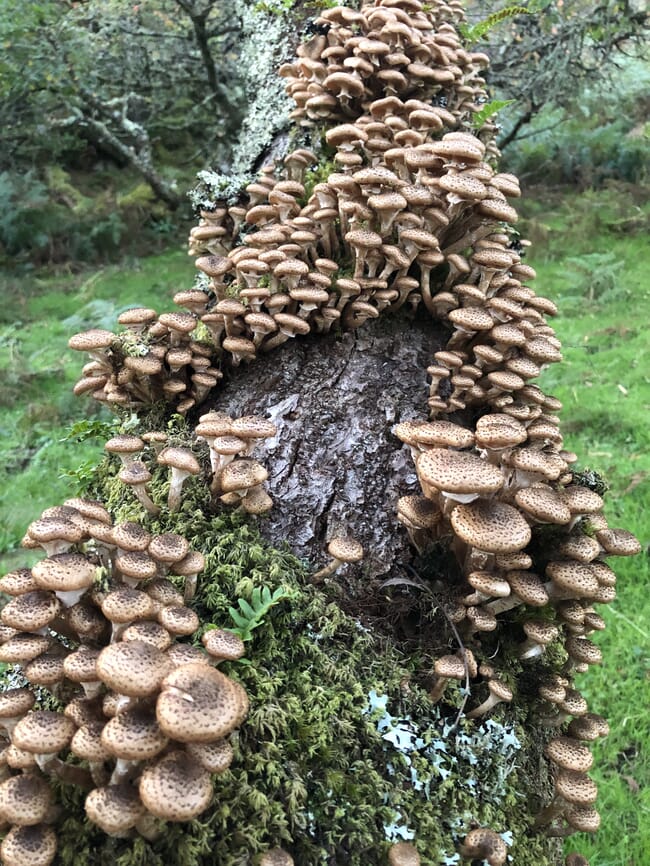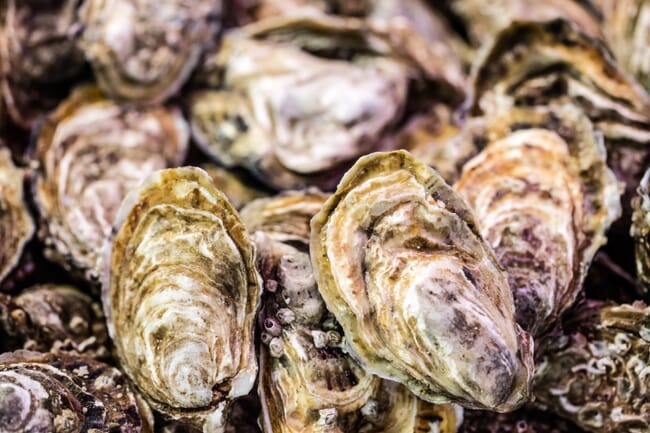Many efforts have been made to promote forest conservation, afforestation and restoration on a global scale – such as the Intergovernmental Panel on Climate Change's Special Report of 2018, which suggested that an increase of 1 billion hectares of forest will be necessary to limit global warming to 1.5°C by 2050. The following year, Jean-François Bastin’s group mapped the global potential tree coverage and estimated that the world’s ecosystems could support an additional 0.9 billion hectares of continuous forest (corresponding to a more than 25 percent increase in forested area) and that such a change has the potential to cut the atmospheric carbon pool by about 25 percent.

© Rob Fletcher
I like trees and I am all in favour of planting more of them, but as a mycologist I have to say that there is a negative side to these estimations that seems to be escaping notice: forests don’t only contain trees that can store gigatonnes of carbon in the wood they make; forests also contain hundreds of wood-decaying fungi that can (and do) digest that wood, releasing all that sequestered CO2, and other greenhouse gases, back into the atmosphere. Those other greenhouse gases include chlorinated hydrocarbons.
Watling & Harper (1998) estimated that the fungal chloromethane contribution to the atmosphere is around 150,000 tonnes per annum, which is about 60 percent more than was released into the atmosphere by industrial coal burning furnaces worldwide in the year of publication.
I’m used to academic biologists being ignorant about fungi – but it’s unforgivable that they’ve not noticed that trees seasonally shed leaves, petals, ripe fruit and dead wood, which are digested and respired to CO2 in the same year that this very same CO2 was fixed from the atmosphere.
These doubts about the “plant trees to soak up CO2” remedy prompted me to check out current research on aggressive emission reductions. I found that most focused on the integration of new technologies to capture CO2from flue gasses in power plants, which are responsible for about 80 percent of the worldwide CO2 emissions (Romano et al, 2013). Exposing flue gas to water under suitable conditions (hydrate-based processing) is a promising and high-efficiency technology for CO2 capture, but the high cost of maintaining suitable conditions for hydrate formation is preventing wide industrial application of this technology (Li et al, 2019).

So, it seemed that the forests and capture from flue gases can’t save us. And that’s when shellfish came to the fore.
I emailed key figures including science journalists at the BBC and the New Scientist, and academics at the Tyndall Centre for Climate Change Research at the University of Manchester and the University of Maine – but received no response.
I did get a response from Bill Sanderson, a marine biologist at Heriot-Watt University. He is working on restoring oyster populations in the Dornoch Firth, which was overfished during the 1800s; the project, supported by the whisky firm Glenmorangie, aims to restore the marine habitat. I asked him if shellfish cultivation for carbon sequestration was a daft idea. He responded within a couple of hours: “Not a daft idea at all. We are looking at this right at the moment. It’s not simple, though, because the animals respire over their lifetimes, producing CO2 and the process of calcification also releases a bit of CO2. Our work will look into the overall budget.”
To me, Bill Sanderson’s reply, in focusing on the overall carbon budget, missed the point. The budget is irrelevant: what matters is that when shellfish die, they leave behind a shell that represents about half the fresh weight of the animal that is composed of 95 percent crystalline calcium carbonate made from CO2, which is now permanently removed from the atmosphere.
It was obvious that the professionals weren’t seeing the idea’s potential, yet I was still convinced of its value. So, I did what I did for the 50 years I was a research scientist: I wrote a brief, but well referenced, comment paper, which has recently published in the Mexican Journal of Biotechnology. It shows that the current level of shellfish farming removes about 5.5 million tonnes of CO2 from the atmosphere and argues that this could be increased considerably by increasing the production of shellfish, in particular bivalves such as oysters and mussels.
While this potential role has not been widely examined, it has gained credibility with one of the world’s preeminent mussel farmers. According to John Holmyard of Offshore Shellfish, in England, who is in the process of developing a 10,000 tonne capacity mussel farm: “If we turn a quarter of UK waters over to mussel farming, the shellfish would draw down about an eighth of our total [carbon] emissions.”
And, I remind you, that’s a permanent conversion of CO2 into insoluble mineral, compared to photosynthetic plants, which store carbon on a temporary basis.
There are other socio-economic/geopolitical contrasts between shellfish farming and forestry too. There is a conflict between using land to grow food crops compared to using land to grow trees – and between growing trees for biofuel (which, of course, only releases the CO2 back into the atmosphere when the fuel is burned, though at least it’s not fossil fuel) and growing native trees to repair and re-establish natural ecosystems. There isn’t enough agricultural land on the planet to accomplish all these things.
By contrast, farming shellfish uses the shoreline and continental shelf. You don’t need to provide irrigation, food or fertiliser. Farming shellfish for food can be combined with restoration and conservation of overfished fisheries and usually involves so little intervention (beyond provision of habitats and, where necessary, protection of larvae and juveniles from predation in “nurseries”) that there is no conflict with other activities. About 70 percent of the earth’s surface is covered by water; we might as well use it to rescue the atmosphere.
There is endless scope for expanding shellfish production. The Views of the World website states the total length of coastlines in the world as between 1.16 million kilometres and 1.63 million kilometres. Continental shelves cover an area of about 32 million km2, equal to about 9 percent of the surface area of the oceans.
I don’t see any limiting factors, beyond the financial investments and the will and drive to achieve it. If we are willing to contemplate planting 1 billion hectares of new forest knowing that trees cannot solve the excess CO2 problem and we don’t have enough land to grow food. Surely, we should be willing to contemplate developing towards 1 billion hectares (10,000 km2 = 0.03 percent of global continental shelf) of coastal waters to production of animals that will permanently remove CO2 from our tortured atmosphere?
Further information
- Dr Moore’s full paper on the subject, A biotechnological expansion of shellfish cultivation could permanently remove carbon dioxide from the atmosphere, can be accessed here.
- The second edition of his textbook 21st Century Guidebook to Fungi is due to be published in April 2020.
- For the social media reaction to the article click here.



